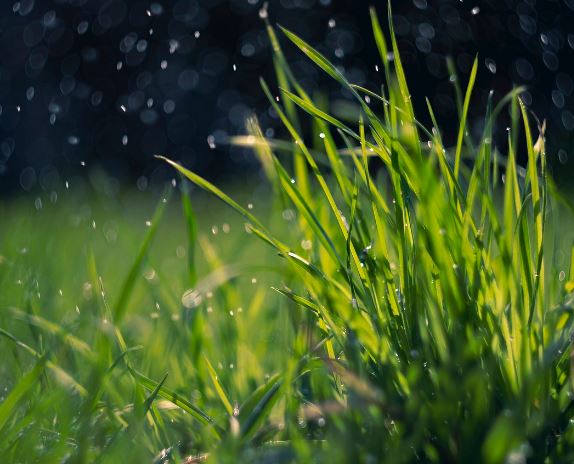Take Your Lawn from Average to Amazing

A lush, green lawn is more than just a patch of grass—it’s a statement of pride, a place to play, and a peaceful spot to relax. For many homeowners, their lawns fall somewhere between “just okay” and “needs work.” Transforming your lawn from average to amazing doesn’t require a complete overhaul or professional landscapers. With a few strategic steps, consistent care, and the right mindset, you can elevate your outdoor space into a beautiful, thriving green retreat. In this post, we’ll walk through six essential elements to help you enhance your lawn, covering everything from soil care and mowing techniques to watering routines and pest management.
Start with Soil
It all begins beneath the surface. The health of your soil is directly tied to the vitality of your grass, so understanding what lies below is crucial. Conducting a soil test is a smart first step—it reveals key insights about pH levels and nutrient content. If your soil is too acidic or too alkaline, your grass won’t absorb nutrients effectively, no matter how much fertilizer you apply. Based on the results, you might need to add lime to balance pH or amend the soil with compost to improve texture and organic matter. Aerating the soil annually is another game-changing move, especially if your lawn sees a lot of foot traffic. This process helps break up compacted soil, allowing oxygen, water, and nutrients to reach the roots more easily.
Choose the Right Grass for Your Climate
Not all grasses are created equal. Selecting a grass type that thrives in your specific climate zone can make a world of difference in how your lawn looks and grows. Cool-season grasses like Kentucky bluegrass and fescue perform best in northern regions, while warm-season varieties like Bermuda, zoysia, and St. Augustine flourish in the south. Even within your yard, consider sun exposure—some grasses do better in shaded areas, while others need full sun. Blending different varieties can give you better year-round coverage and resilience. Using high-quality grass seed or sod ensures that you’re starting with the best possible foundation for a healthy lawn.
Master Mowing
Mowing is just one part of maintaining a crisp, clean lawn—trimming is the finishing touch that takes it to the next level. After mowing, use a trimmer to tidy up hard-to-reach areas like fence lines, around trees, garden beds, and walkways. Cordless string trimmers are especially handy, experts from Worx add, offering freedom of movement without the hassle of cords or the noise of gas models. These tools provide precise control and are perfect for keeping edges sharp and grass uniformly neat. Consistent mowing and smart trimming create a professional, polished look that elevates your entire yard’s appearance.
Water Wisely and Consistently
Watering is where many lawns go from average to exceptional—or where they suffer. Overwatering can lead to fungal growth and shallow root systems, while underwatering causes stress and yellowing. The ideal time to water is early in the morning when temperatures are cooler and evaporation is minimal. Aim for deep, infrequent watering—typically about one inch per week—so the roots grow deeper and stronger. Sprinkler systems should be adjusted seasonally and inspected regularly to avoid over-saturation or dry spots. If you want to go the extra mile, consider installing a smart irrigation system that adjusts watering based on weather patterns and soil moisture levels.
Feed Your Lawn the Right Way
Fertilizing your lawn is like giving it a balanced diet, and timing is everything. Spring and fall are typically the best times to apply fertilizer, giving your grass the nutrients it needs during growth spurts. Choose a slow-release, nitrogen-rich fertilizer that matches your grass type and local climate conditions. Organic options like compost tea or natural lawn food can also enhance soil health over time. Be careful not to over-fertilize—too much nitrogen can burn your lawn and lead to thatch buildup. Pair fertilization with proper weed control strategies to keep unwanted plants from stealing nutrients and crowding out your grass.

Tackle Weeds, Pests, and Disease Proactively
A beautiful lawn can quickly become a battlefield if weeds, insects, or diseases are allowed to take over. Dandelions, crabgrass, and clover are common culprits that compete with your grass for sunlight and nutrients. Integrated weed management strategies—like pre-emergent herbicides in the spring and spot treatments throughout the season—can help you stay ahead. Pests such as grubs and chinch bugs can damage root systems, so keep an eye out for irregular patches or wilting. Lawn diseases often show up as discolored rings or spots, especially in humid weather. Early identification and treatment, whether chemical or organic, can prevent minor issues from turning into major setbacks.
Your lawn doesn’t have to stay stuck in the middle of the pack. By taking a smart, proactive approach to soil care, grass selection, mowing, watering, feeding, and pest control, you can transform it into a vibrant and healthy landscape that stands out. Each of these steps may seem small on its own, but together, they form a complete strategy that turns average lawns into exceptional ones. With time, effort, and consistency, your outdoor space can become one of your home’s greatest assets—inviting, beautiful, and something to truly be proud of.






